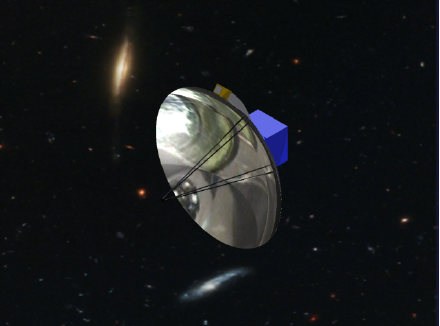
Image Source: NAOJ
Adaptive X-Ray Optics (made with Magnetic Smart Materials), Near Infrared Cameras, and Deployable Optics for Space-Based Telescopes
Mel Ulmer's Web Site
Prof. Ulmer's arXiv Search Results
Prof. Ulmer's ADS Search Results |
|
Summary of Research
Dr. Ulmer divides his time between instrumentation development and astrophysical studies. Currently much of his focus is on two projects: APERTURE, a NASA Innovative Advanced Concept project for large space telescopes; and developing a high-speed Near Infrared camera with funding from the W.M. Keck Foundation to image Earth-like planets orbiting in the habitable zone of their host planets.
Projects and Collaborators
 |
Novel Near-Infrared Camera System for Breakthroughs in Astrophysics and Beyond
Developing a new high-sensitivity near-infrared camera for use in adaptive optics systems on telescopes, to help directly image planets around other stars.
- Hooman Mohseni, Department of Electrical Engineering and Computer Science (EECS)
- Olivier Guyon, NAOJ
- Katie Barnhart, dual major Physics & Astronomy (P&A) and Chemistry
- Min-Su Park, Keck Foundation Postdoctoral Fellow
- Cobi Rabinowitz, Keck Foundation graduate student, P&A
- Mohsen Razheni, EECS
- Chee Leong Tang, Keck Foundation Postdoctoral Fellow
- Skyler Wheaton, EECS
|
 |
Aperture: A Precise Extremely large Reflective Telescope Using Re-configurable Elements
Designing a new deployable and self-correcting mirror system that enables orbiting telescopes to be much bigger than the limits enforced by current rockets.
- Victoria Coverstone, Texas Tech University
- Kyle Condron, BA in Physics and Mechanical Engineering
- Matt Johnson, Electrical Engineering
- Ally ODonnell, Mechanical Engineering, Physics minor
- Shi Claire Ye, Physics & Astronomy
|
 |
NASA Illinois Space Grant: Undergraduate Research Fellowships and Summer Research Projects
Hosting undergraduate summer students in summer research programs, with a special emphasis on helping female and minority students.
- William Kauffman, Materials Research Center
|
 |
X-ray Optics for Astronomy and Synchrotrons
Developing lower-cost X-ray reflecting optics by building them with “magnetic smart materials”: materials that respond to a magnetic field, changing their shape to improve image quality.
- Jian Cao, Department of Mechanical Engineering
- Yip-Wah Chung, Department of Materials Science
- Semyon Vaynman, Department of Materials Science and Engineering
|
 |
Dark energy American French Team/French American Dark energy (DAFT/FADA)
Observing clusters of galaxies with an emphasis on X-ray emission, weak lensing, strong lensing, star formation in galaxies, and search for high-z galaxies.
- Christophe Adami, Laboratoire d’Astrophysique de Marseille
- Florence Durret, Institut d'Astrophysique de Paris
- Gastao Lima Neto, Instituto de Astronomia, Geofísica e Ciências Atmosféricas
- Tatiana Lagana, Universidade Cruzeiro do Sul
|
 |
Tidal Disruption Events and X-ray Sky Variability in the Direction of Clusters and Galaxies
Searching for tidal disruption of stars through X-ray variability studies of galaxy clusters.
- W. Peter Maksym, Harvard Smithsonian Center for Astrophysics
(This image from: https://www.nasa.gov/multimedia/imagegallery/image_feature_132.html) |
|